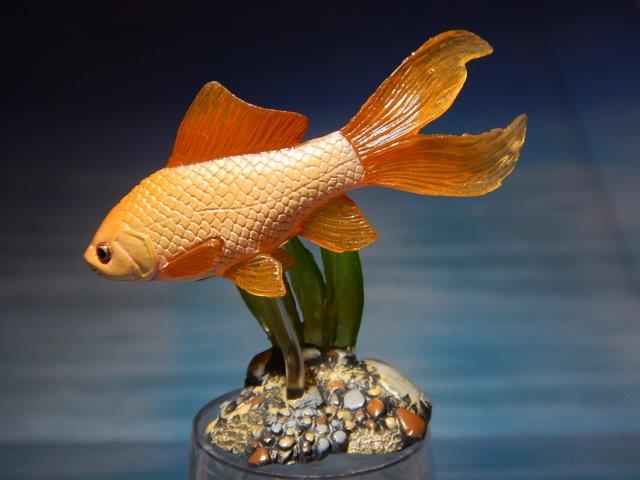
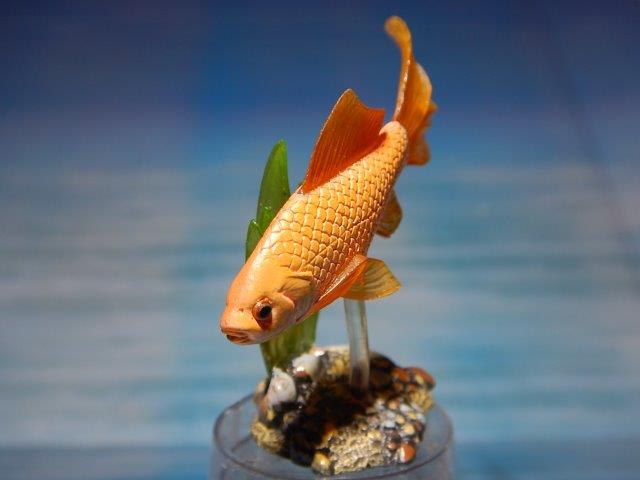
This figure is the Common Goldfish, Carassius auratus, model number 17, from the second series. There are a couple of different ‘wild’ versions in Book 2, but for whatever reason I don’t have either one of them. Instead, this is the Secret domestic version, which is listed as number 17 in the series. Unlike the preceding Langsdorf’s Goldfish, this species is probably one of the most familiar fish of all! They are the classic fish-bowl fish (even if that is horribly cruel to them).
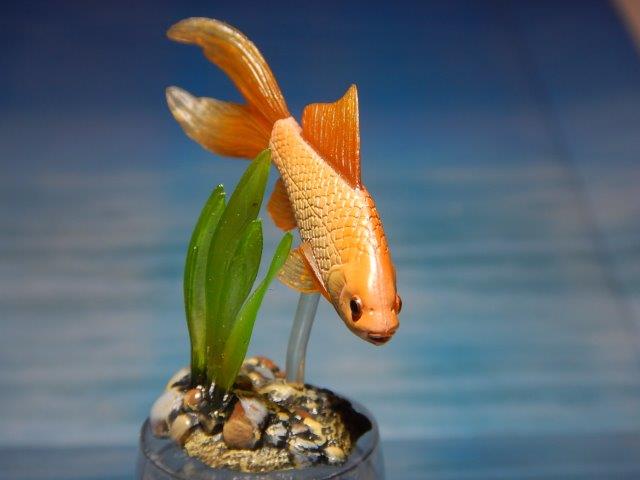
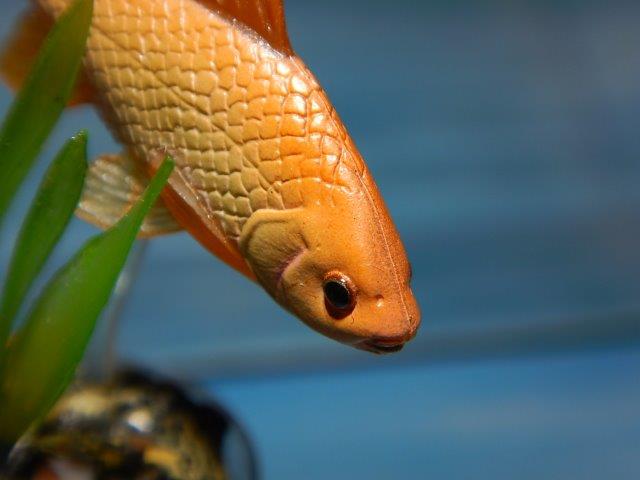
Originally found in the wild as a brownish or silvery (but variable) freshwater fish (known frequently as the Prussian Carp), in China the Common goldfish has been reared for hundreds of years as both a food fish and as an ornamental pet. Their genetic plasticity has led to some very unusual morphologies and colours, and they are a staple of aquaria and ponds everywhere. Unfortunately, their adaptability means that they are also a staple among invasive and introduced species around the world (especially cooler regions)—my home province just put out a public notice requesting/demanding that people stop flushing and otherwise releasing them into wild water ways as they risk becoming established (note–when I wrote this, it was true It still is!) The Yujin model (and other sources) gives a length is around 20cm, although larger ones are documented (and, of course, many don’t live to attain near those lengths due to poor husbandry habits…)
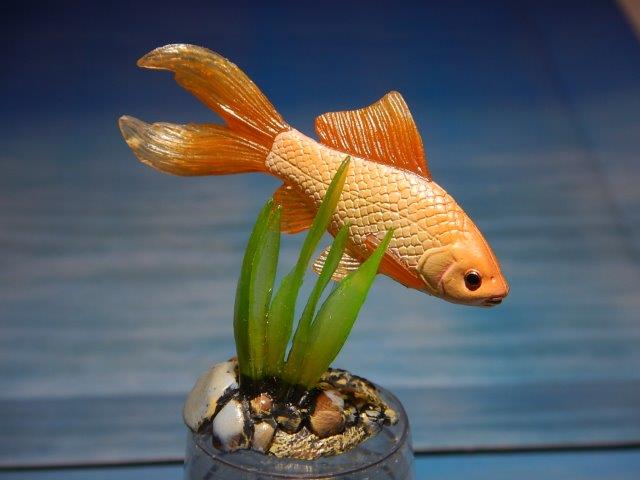
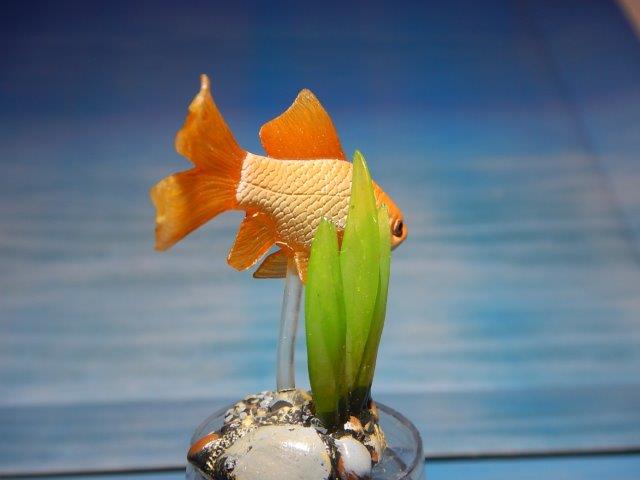
This model is about 5.5 cm long (this is TL, including the long tail), making the figure roughly 1:4 scale. This model is based on the breed referred to as a comet, which features a more-or-less unaltered body, but the two lobes of the tail fin are much longer than normal (see the Langsdorf’s Goldfish for an idea of the ‘wild’ state). These are also the strain most commonly found where I live as feeder goldfish. The figure is the ‘classic’ bright orange with white highlights typical of pet goldfish—the fins are a darker, translucent orange, giving a very realistic look to the fish. The belly is a distinct white. The base is a special painting of the gravel + plant, with each grain of sand and gravel individually painted in a variety of bright colours—perhaps to mimic the gravel of a fish tank? This would make sense, as that is the only way this fish could survive; even in outdoor ponds in yards I have heard of birds like herons stopping and taking all of the brightly coloured fish.
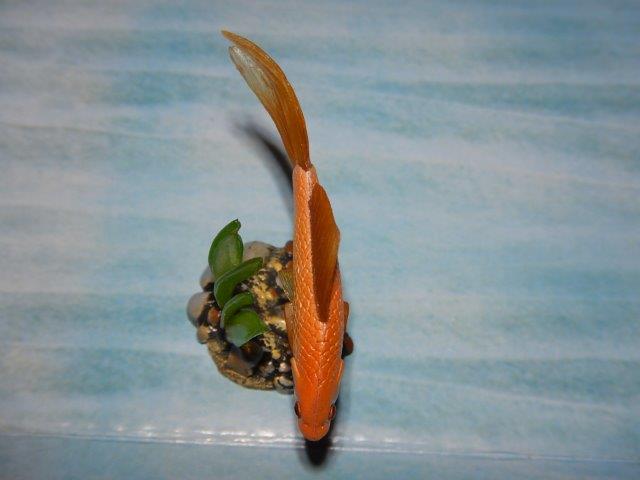
The domestic goldfish is probably the most common fish toy/figure/model out there. Safari makes several in different sizes (more since this original post), Yujin has an entire series devoted to just goldfish strains, and every company has made at least a few, right down to low-quality novelties and dollar-level toys. To say nothing of the vast amount of artwork, sculpture, and other products that exist, which is logical given the long history of the fish as a pet. That could be why I don’t have the wild strain one; I don’t generally collect domestic animals, and I think this one came from a bulk lot. Maybe I’ll fix that someday.

Starting on the 14th of January, 2024, I migrated my first Yujin Freshwater Fish Pictorial walkaround post from the Animal Toy Forum to this blog, with the intention of moving all species’/figures’ walkarounds here. The initial post contained a lengthy explanation of the series (both the original and updated) that I don’t think should be repeated each time! For those details, the post can be seen at the first post. Then we can just get to the fish. Most of the details and writing will come from the original post, although I may supplement/add where appropriate.
Disclaimer: links to Ebay and Amazon on the AnimalToyBlog are affiliate links, so we make a small commission if you use them. Thanks for supporting us!



